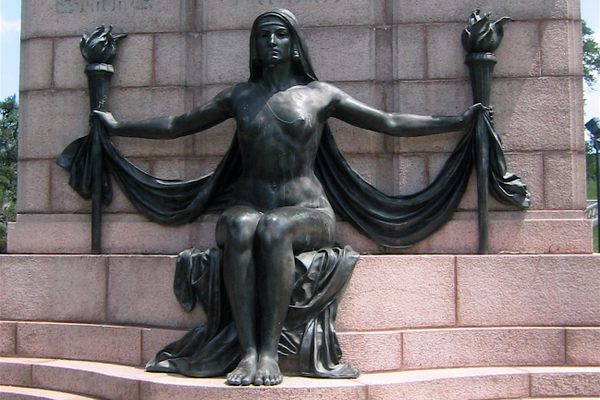Moyai
Inspired by the famous sculptures on Easter Island, this head serves as a popular meeting spot by Shibuya Station.
Since its installation in 1934, the Hachiko statue has been a popular meeting spot in the super-busy Shibuya Station. Over the years, the loyal dog has become famous around the world, and visitors come to pay their respects. But there is another sculpture in the area that is used for meet-ups—though it is not as renowned, it also has a rich history.
Moyai, perhaps better known as the Shibuya Moai Statue, looks like a squat, head-only imitation of the famous moai statues of Easter Island, with long, dreadlocks-like hair. While it is located at the back of Shibuya Station, its prominent size and unique appearance makes it pretty easy to spot.
But why is it called “Moyai” instead of “Moai”? Although the standard Japanese meaning of the word is “mooring” or similar, this is not a wordplay on it. It originates from Niijima, an island under the administration of Tokyo Metropolis, where the word moyai means helping each other or working together as one.
The first Moyai statue was created between 1965 and 1975 by sculptor Yūichi Daigo and his friends in an effort to make a symbolic tourist spot on Niijima. Inspired by the statues on Rapa Nui and the local spirit of moyai, he sculpted a hundred statues and placed them on the island, creating an iconic sight. These statues were carved out of kōga-seki, a kind of volcanic rhyolite rock exclusively quarried on the island.
Shibuya Station’s Moyai was a gift from Niijima, to commemorate the centennial of the transfer of the island’s administration from Shizuoka to Tokyo. In addition to its moai-esque face, it has another, totally different face on its back, and a plaque right beside it hidden in the bush.
Know Before You Go
The statue can be found on the West Exit side of the station, in front of the Tokyu Department Store. The station is notoriously convoluted and often crowded, so be careful not to get lost.
There are several other (even more obscure) Moyai statues throughout Japan, including Fukaura (Aomori), Ishioka (Ibaraki), Shimoda (Shizuoka), as well as Kamata and Takeshiba in Tokyo.

















Follow us on Twitter to get the latest on the world's hidden wonders.
Like us on Facebook to get the latest on the world's hidden wonders.
Follow us on Twitter Like us on Facebook